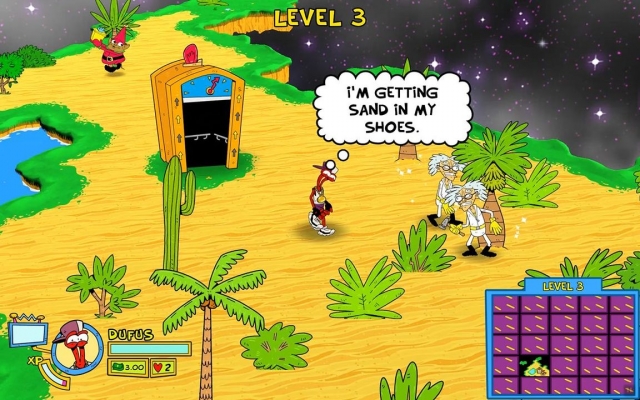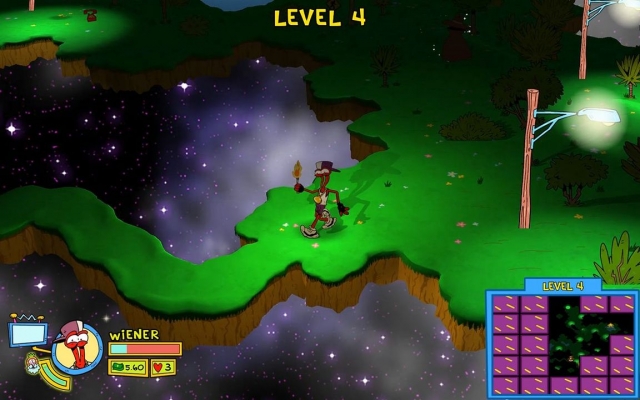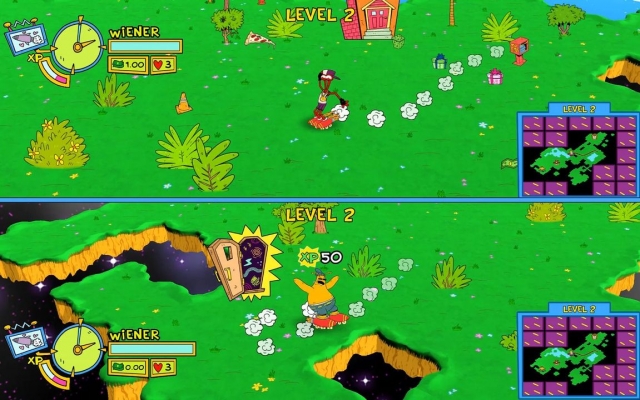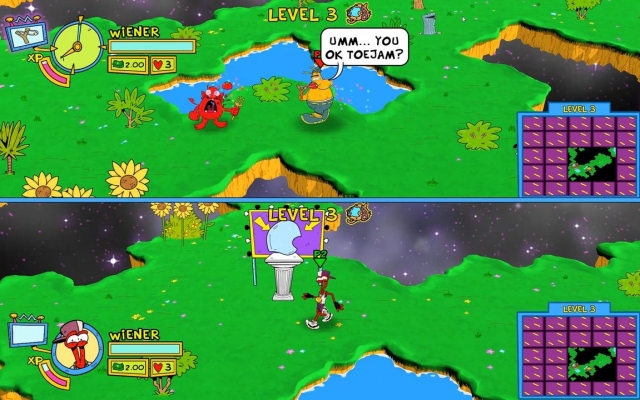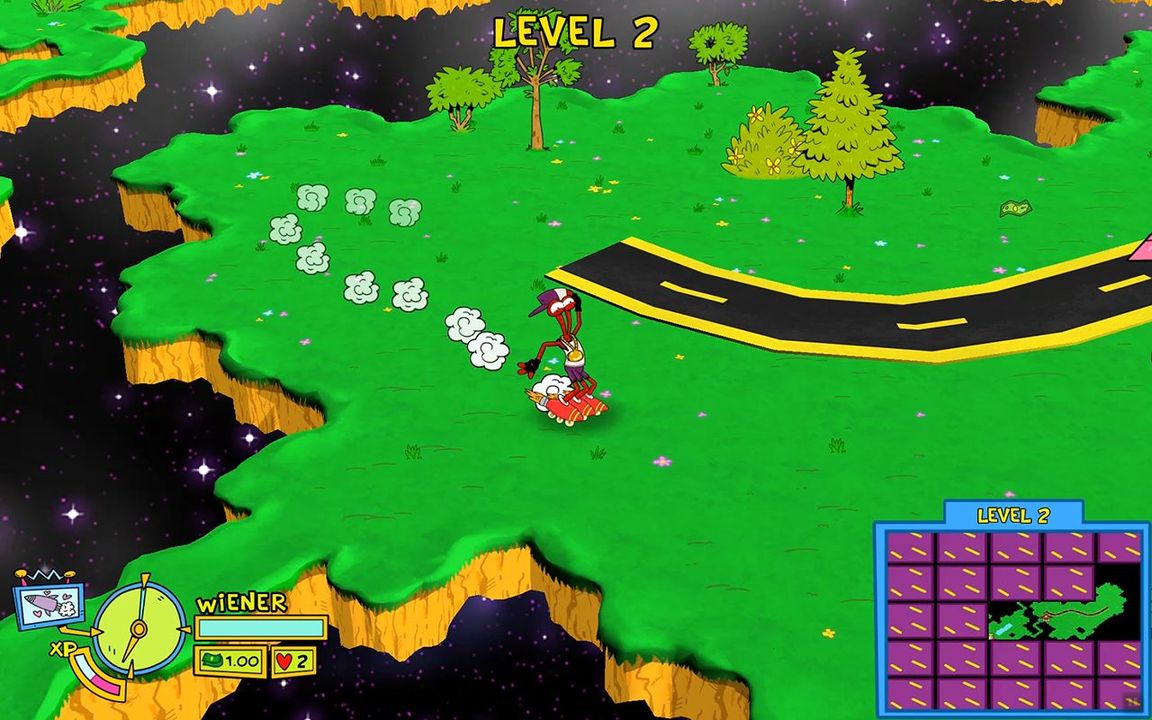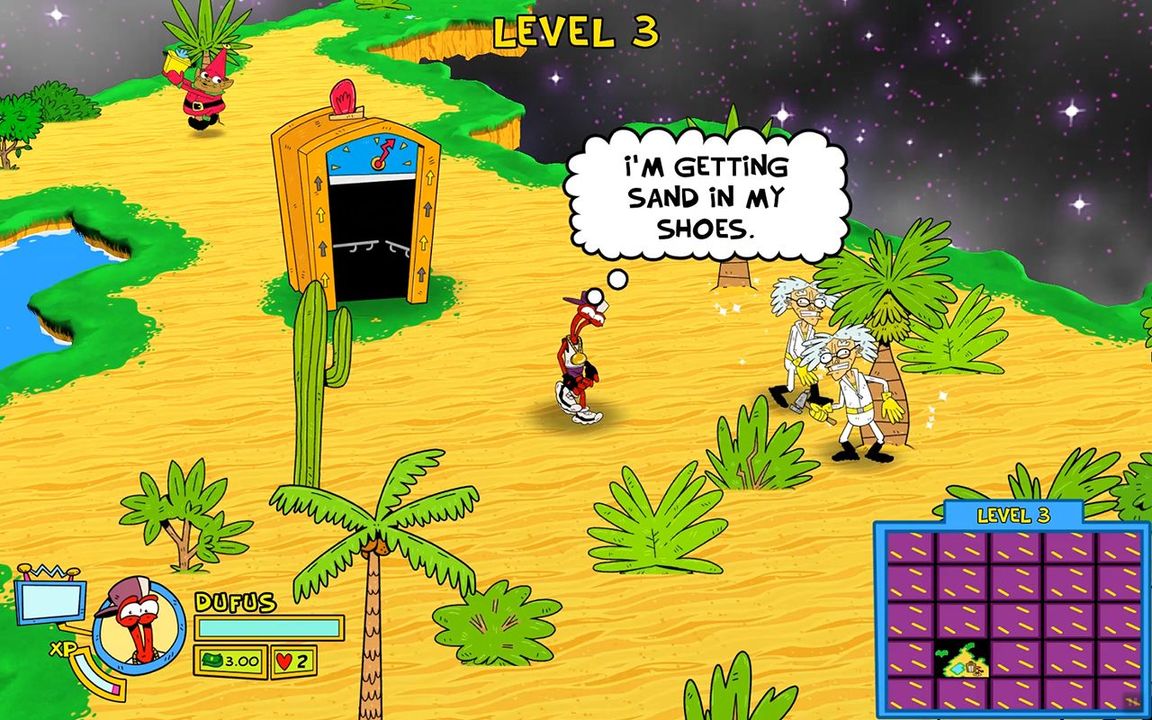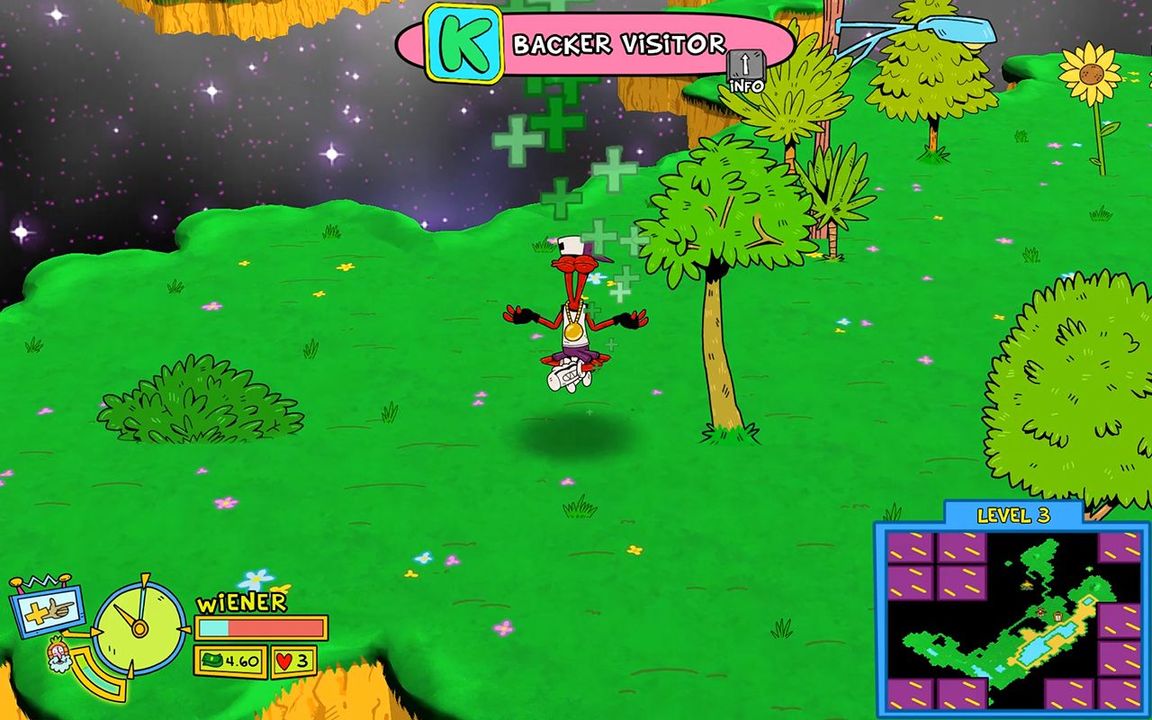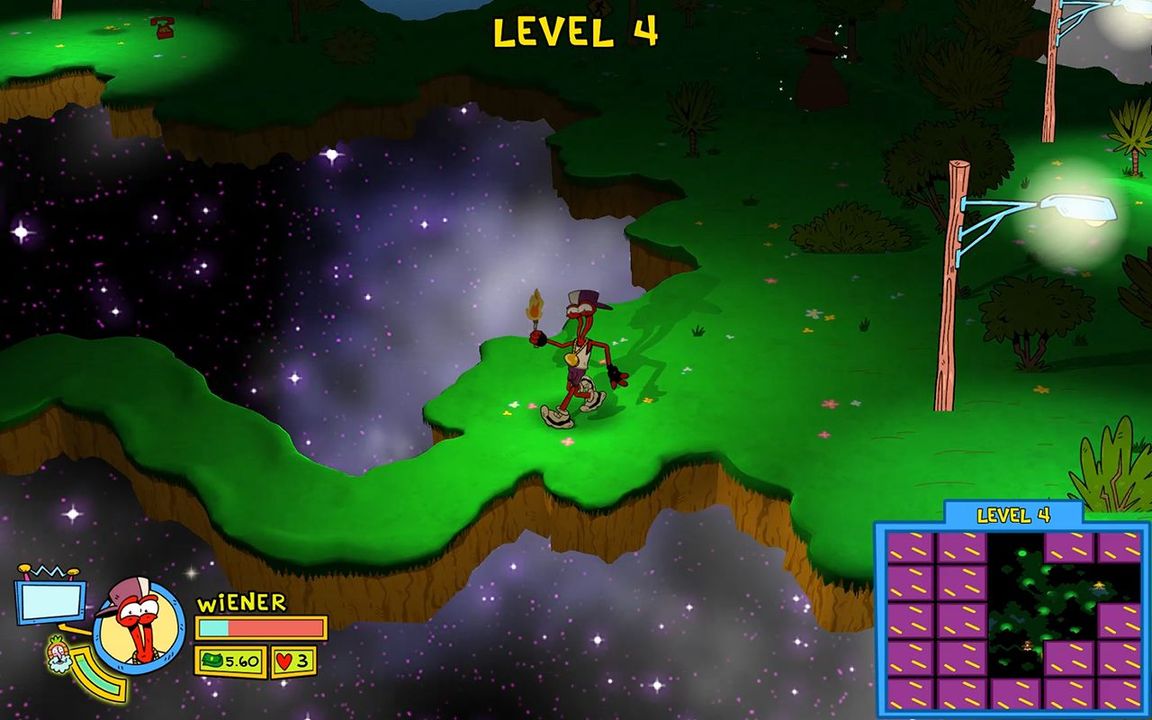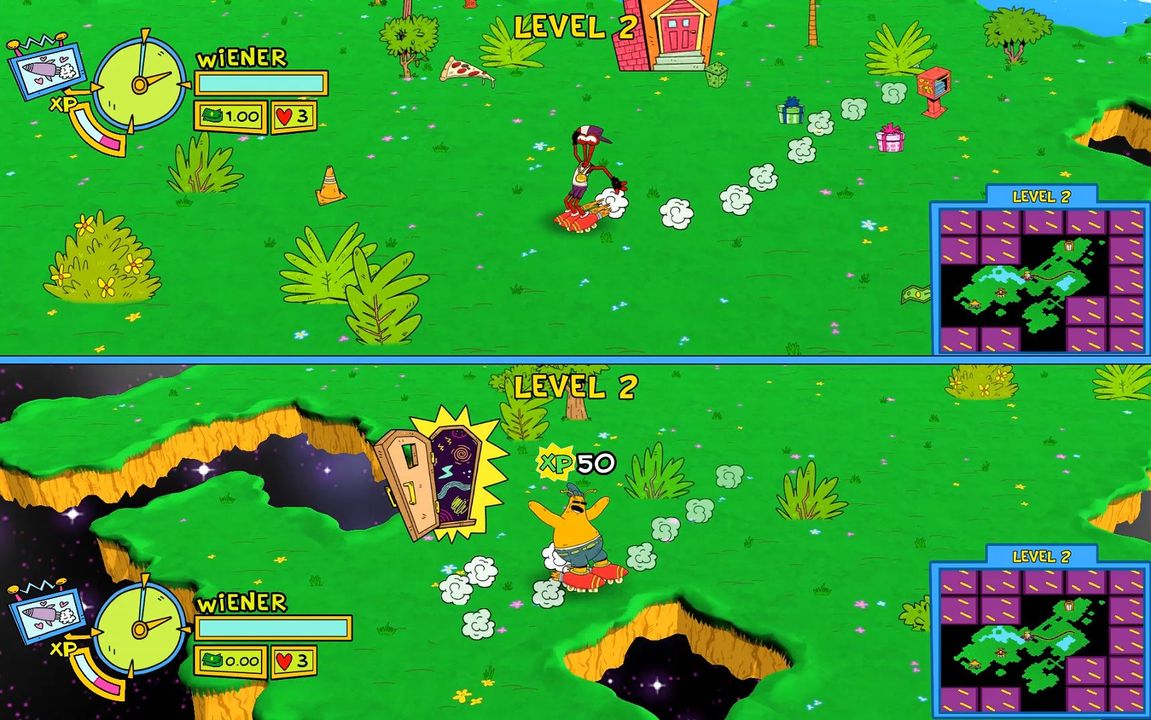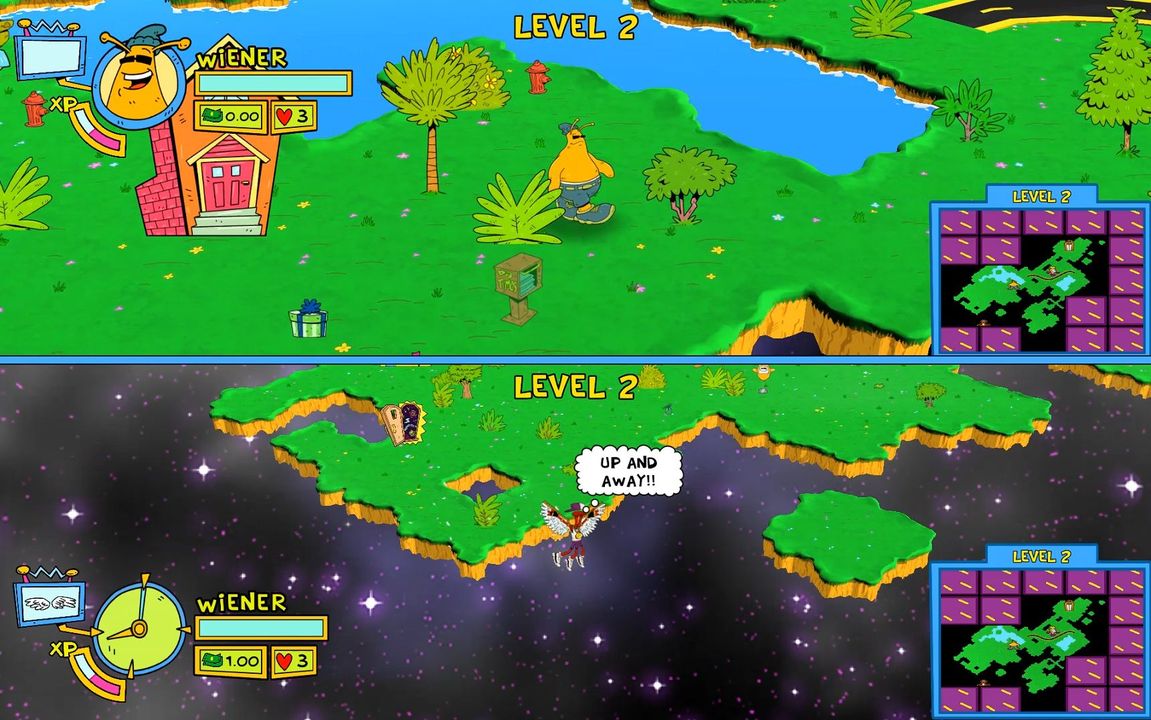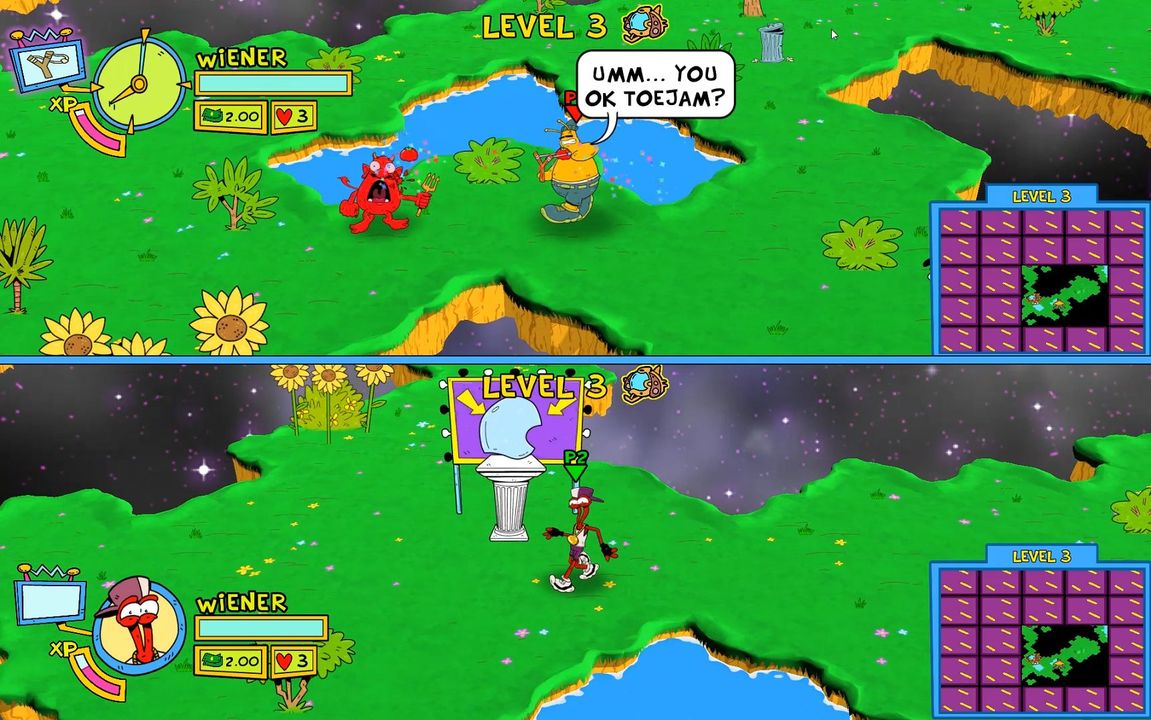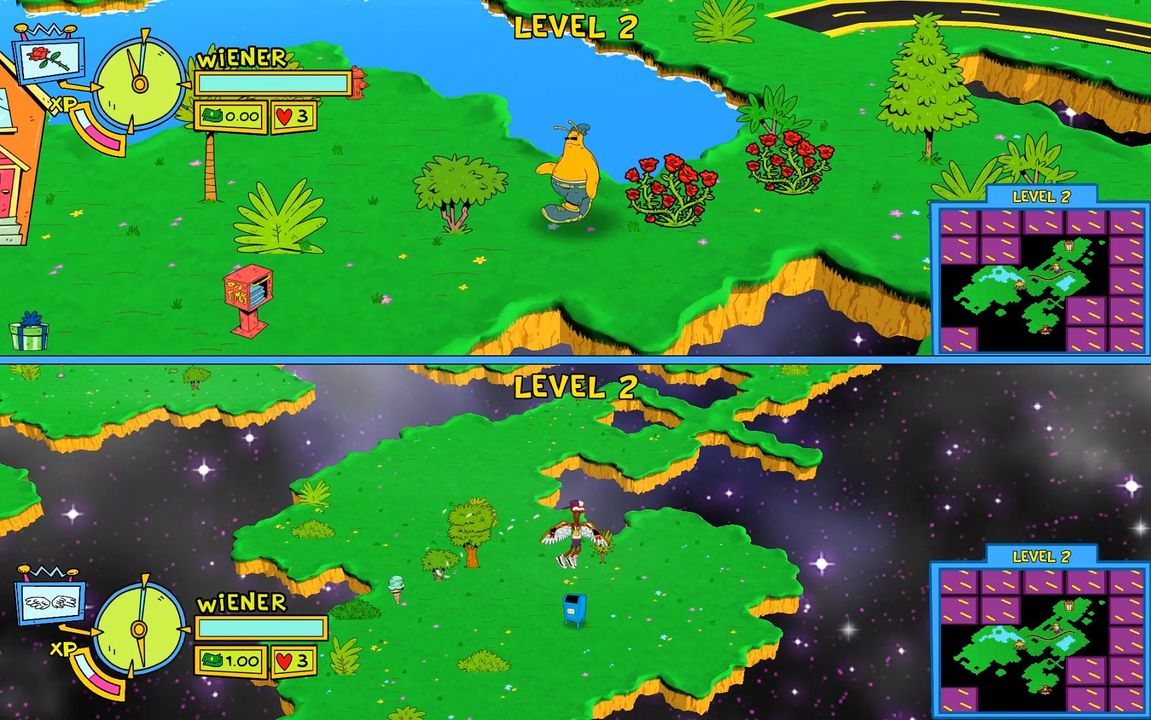ToeJam and Earl: Back in the Groove!
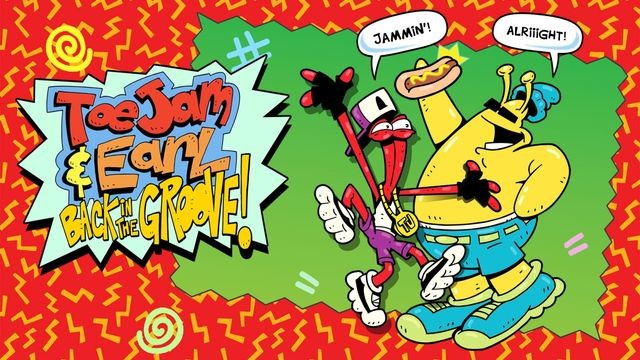
The original ToeJam and Earl game was an early hit for the Sege Genesis, and one of the few examples of a slower-paced adventure game being a success on consoles. It also acted as a bit of a precursor to the collect-a-thon sub-genre of platformers that would gain prominence in the late ’90s. With its bright neon colors and blend of rap and hip-hop music culture integration, it was very much a product of the times. This wound up being both a blessing and a curse, as it led to the game seeming contemporary – but only for a very short timeframe. Even by 1994 when its sequel came out, the neon-soaked ’80s look that bled into the early ’90s was seen as behind the times and that game’s shift to a 2D platformer instead of a collect-a-thon wasn’t as received as well – but was a solid example of that genre.
The problem with Panic on Funkatron wasn’t that it was a bad 2D platformer, it just wasn’t a great ToeJam and Earl experience overall. Its trippy special stages did receive great acclaim though, and fit into Back in the Groove wonderfully. The third entry was originally planned for the Dreamcast, but was cancelled and moved over the Xbox. This brought about Xbox Live content downloads and a new character in Latisha alongside a return to the collect-a-thon format, only in 3D. The move to the third dimension, especially with the hardware at the time, showed that the series didn’t quite translate perfectly and it felt a bit more laborious than fun. Fortunately, Back in the Groove hit Kickstarter with the express purpose of taking things back to the roots of the 16-bit games, sticking with what worked, and filtering out what didn’t.
For the most part, this approach works quite well. The gang is back in action due to Earl hitting the wrong giant button and sending them all onto a planet to try and rebuild their giant ship. The titular characters have been revamped visually from their older designs, but you can still enjoy their ’90s versions too alongside Latisha and a new character in Lawanda to start. Each character has a certain base skillset – so while Earl is slow, he’s also got some power which comes in handy with earthlings causing trouble. ToeJam is quick, but not the best at searching to find things. No matter what character you choose, you can build their stats up – so if you enjoy Earl’s more laid back vibe, pick him and know that you’ll be able to make him faster than his normal sloth-like speed fairly quickly.
The crux of TJE’s action involves you searching the world and interacting with people. Some are friends and some are foes. Foes can be bought off with gifts you find from exploring the world, and you can do that by simply pressing A and shaking things. Trees, buildings, many people – they’re all fair game and they can drop food or items that can help you out. Being thorough in your search is a must as you’ll need to find a piece of a ship to move on to the next area, but there’s more to excelling than just doing that. The more you find, the more XP you earn, and that allows you to boost your stats faster.
The hyper drive mini-game brings back some platforming too, and mixes in a bit of an endless runner with a traditional bonus game. It allows you to earn a ton of extra items and XP while offering up a completely different experience. The fast-paced platforming here is made even more exciting with its almost hand-colored look with a crazy off-model style. Normally, an off-model look isn’t wise, but here it offers up a huge change of pace visually while also adding a bit more life to the world. It reminds you that in a world with hula dancers making you dance and people stalking you to attack, you can at least have some pure fun if you want.
This holds true for the rhythm mini-game too, where you match up button presses to the beat. It’s a very simple game, but a nice diversion – if one that is probably better with either a keyboard or a wired controller if you’re playing on PC to ensure that your timing isn’t off. You have to be dead-on to get a high ranking, even more than something like PaRappa the Rapper on a CRT. There’s more variety here than in prior TJE games, and some nice quality of life improvements. If you want to skim through the exploration parts of the game for whatever reason, then you can just pick an item and find the ship part instantly. Doing so may seem like a wise idea, but it should only be done when you’re stuck as you do want to level up and gain XP. Beyond improving your character, each level you go up lets you spin a slot machine and gain either bigger boosts to your stats, money, XP, or all of the above.
There’s a steady reward system in place here that keeps things from ever getting tiring, and it makes playing through each level more fun than the last. Now this game’s pacing isn’t going to be for everyone, but that’s where being able to skip around a bit with exploration versus just finding the parts comes in handy. You can do as much or as little of the core goal as you want to, and having that level of freedom makes this the most purely enjoyable entry in the series to date.
Visually, Back in the Groove is a blend of old and new with a cel shaded art style that evokes the original game, but with a detail level more in line with the sequel. There, facial expressions and more detailed body language were used and here, the detail levels have risen exponentially with the use of more modern hardware. Animations are smoother and the environments are more detailed – especially the hyper drive areas. This isn’t the kind of game that you will use to show off a gaming rig, but is the kind that looks good in every measurable way and impresses based on what it’s trying to do.
Musically, it’s also a nice mix of hip hop with a touch of rock thrown in. This sound in particular was a bit odd at first, but later felt perfectly in-line alongside a bit of funk too. The voice work is okay, but really doesn’t shine much in cutscenes – but instead in tiny soundbytes mid-game where you get touches of the playable roster’s personalities as they interact with others. The sound effect work beyond that is fine, but unspectacular. Luckily, the soundtrack helps make up for some of the other sound-related shortcomings.
Overall, ToeJam and Earl: Back in the Groove! is a fantastic return to form for an underrated franchise. While the series has gotten a bit of love in the era of digital re-releases, it still isn’t quite seen as something that helped define Sega’s early Genesis days as being more contemporary. With that has come the game’s visual design being a throwback now, and in that way, it almost works better now than it did in its heyday. There’s a lot of care put into this game and while its leisurely pace won’t be for everyone, when you take the time to learn the mechanics, the game just clicks into place and becomes more than the sum of its parts. There are some rough edges to Back in the Groove, but they add a bit of charm to the experience.
Reviewed By: Jeremy Peeples
Publisher: HumaNature Studios
Rating: 85%
——————————————————————————–
This review is based on a digital copy of ToeJam and Earl: Back in the Groove! for the PC provided by HumaNature Studios.
 Game Over Online
Game Over Online